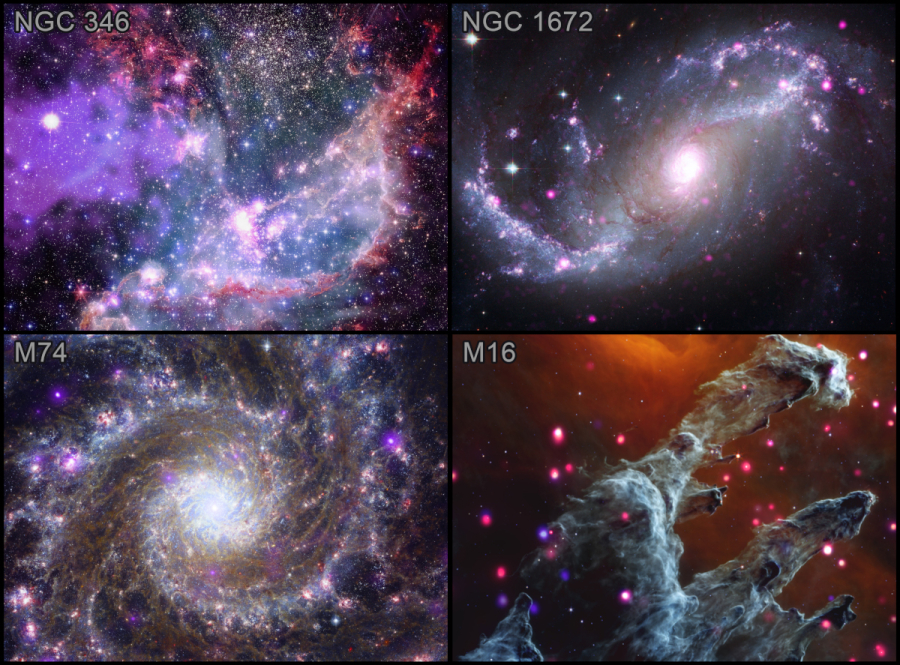
NASA has released stunning images of two galaxies, a nebula and a star cluster captured by the James Webb Space Telescope and the Chandra X-ray Observatory.
“When several NASA telescopes observe the same cosmic region, the true colors of the universe are revealed,” she said. NASA.
To create photomontages, a NASA Turned into the James Webb Telescope and Observatory Chandra x-ray.
Every picture brings them together Chandra x-ray – A form of high-energy light – with infrared data from its images web which has already been launched and is not visible to the naked eye.”
NASA included data from the Space Telescope HubbleWhich uses optical light, space telescope Spitzer The retired (infrared), European Space Agency’s XMM-Newton (X-ray) European Southern Observatory telescope (optical).
Images generated by the star cluster NGC 346, spiral galaxy NGC 1672, nebula M16, and spiral galaxy M74, is one of NASA’s most impressive shots.
{https://twitter.com/NASAWebb/status/1661088535070294026}
Star cluster NGC 346
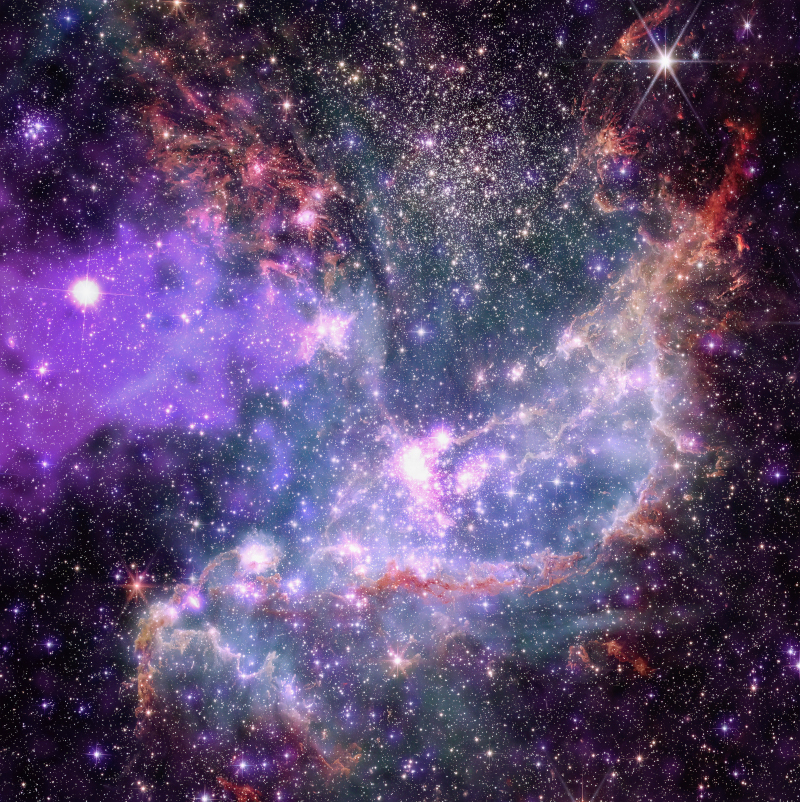
the NGC 346 It is a star cluster in the Small Magellanic Cloud, 200 thousand light-years from Earth. Photographs by James Webb show plumes and arcs of gas and dust that stars and planets use as raw materials in their formation. The visible purple cloud is the remnant of a massive star’s supernova explosion.
“The Chandra data also reveal young, hot, massive stars that send strong winds outward from their surfaces,” he said. NASA.
Spiral galaxy NGC 1672
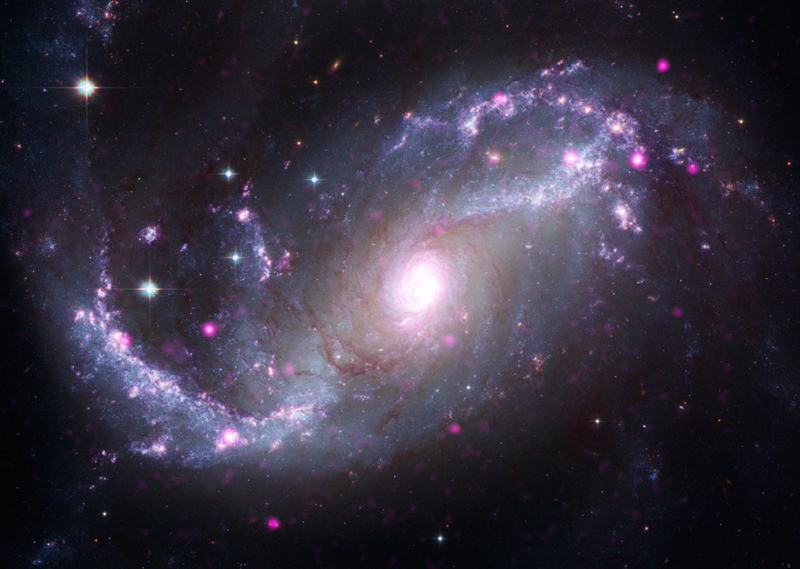
NGC 1672 is a barred spiral galaxy with a central bar of stars and gas. The galaxy’s spiral arms begin at the ends of the bar.
“In regions near their center, the arms of spiral galaxies are mostly barred in a straight belt of stars along the center that encircles the nucleus, unlike other spirals that have arms that coil up to their nuclei,” he explained. NASA.
his data Chandra It reveals compact objects in the spiral galaxy, such as neutron stars and black holes, as well as the remnants of supernovae.
M16 Nebula – Messier 16 (The Eagle Nebula)
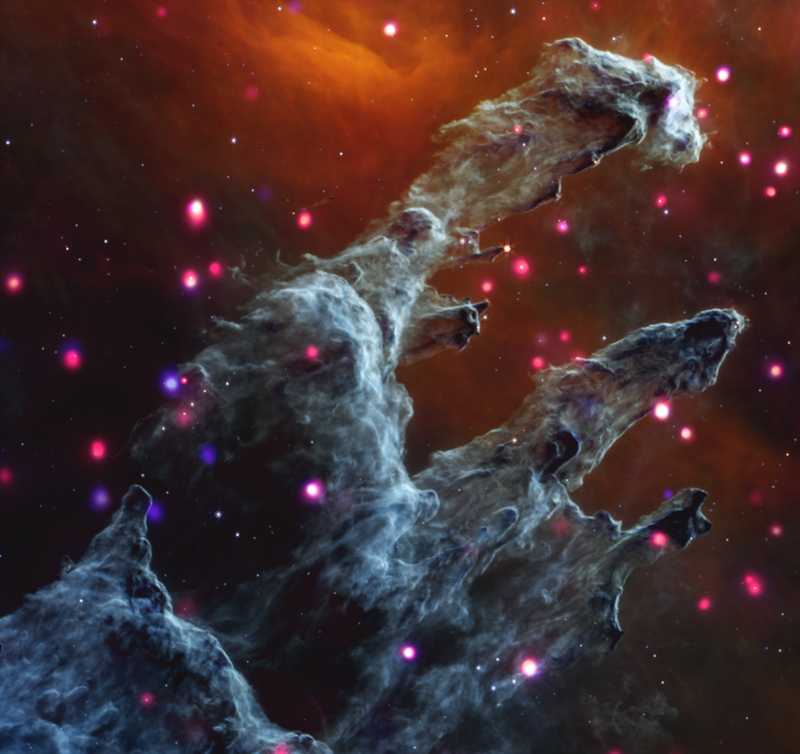
Messier 16, also known as the Eagle Nebula, is a famous region in the sky often referred to as the “Pillars of Creation.” In the composite image, Webb’s data reveal the dark pillars of gas and dust covering the few remaining young stars as they form. The Chandra data looks like dots and shows young stars emitting copious amounts of X-rays.
Spiral galaxy M74 – Messier 74 (Ghost Galaxy)
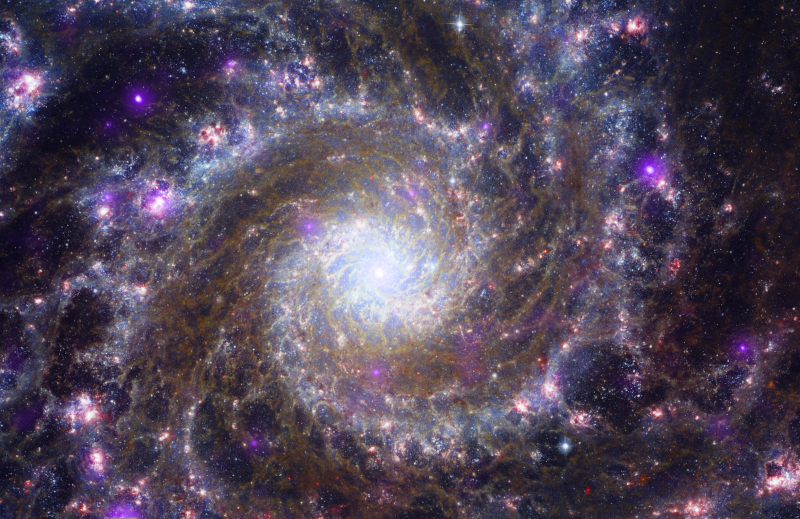
Finally, Messier 74 is another spiral galaxy about 32 million light-years away that we can see from Earth.
“Messier 74 is known as the ghost galaxy because it is relatively faint and therefore difficult to detect with small telescopes,” NASA explained.
The James Webb data depict gas and dust in the infrared, while the Chandra data show high-energy stellar activity at X-ray wavelengths.

“Total alcohol fanatic. Coffee junkie. Amateur twitter evangelist. Wannabe zombie enthusiast.”







More Stories
Is this what the PS5 Pro will look like? (Image)
Finally, Windows 11 24H2 update significantly boosts AMD Ryzen – Windows 11 performance
Heart Surgeon Reveals The 4 Things He ‘Totally Avoids’ In His Life